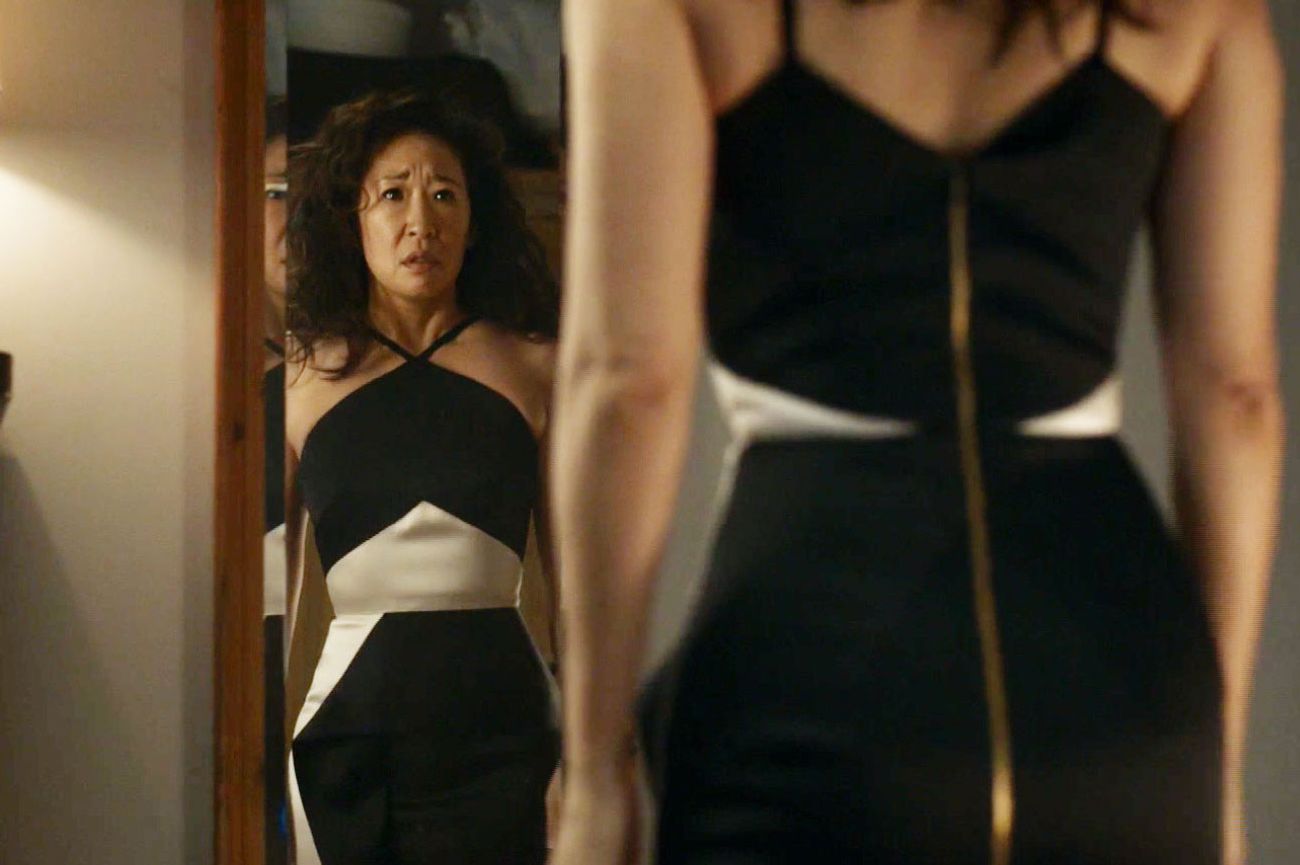Type ‘Killing Eve‘ into Google and you’ll get everything: Twitter-based controversies over queerbaiting; fashion breakdowns in Vogue; video essays on the history of psychopathy and investigation.
For those unfamiliar, the show focuses on Eve Polastri, a bored American MI5 worker, who is assigned to track down the talented, psychopathic assassin Villanelle. As the chase progresses, the two develop a mutual obsession. The presentation of the cat-and-mouse relationship between an investigator and criminal is used as a site to explore conventional social morals. Since this form of storytelling has often been dominated by masculinity, Killing Eve portrays the classic assassin genre in a new light, with dynamic, female leads. Despite being complete opposites, both the protagonist and antagonist are successful yet flawed, dismantling the stereotype of the “perfect women”.

Major themes within this female-led dual narrative can be displayed through the fashion choices of Eve and Villanelle. Throughout the show, Eve describes herself as liking to observe others but not interested in being seen. This can be manifested in the style of her clothes, which tend to be simple and particle, consisting mostly of dull colors. Her fashion can be interpreted as defiance towards the male gaze, rejecting a prominent characteristic of many women portrayed in mainstream TV.

In contrast, Villanelle enjoys being observed by others, but on her own terms. Her fashion sense is bright, loud, and attention-seeking. Despite looking like she just stepped out of a magazine, her entire identity doesn’t revolve around her sexuality and physical appearance. She finds power in knowing she is beautiful but also knowing she is intelligent and can use her mind to manipulate everyone around her. Tailored suits are an iconic part of Villanelle’s style, clearly displaying both her power and the reversal of traditional gender roles in media.

The obsession between Eve and Villanelle is also largely played out with clothes, potentially indicating the presence of a female gaze within Killing Eve. An example of this is when Eve travels to Berlin following a lead, Villanelle steals her suitcase and replaces the contents with brand new, decadent garments. This can be interpreted as an attempt by Villanelle to manipulate Eve into understanding her own beauty. Eve is being seen, but she is being seen by another woman.

The relationship between the main characters and their fashion displays the way in which TV can be simultaneously aesthetic and ideological. The audience has the opportunity to find deeper meaning in both Eve and Villanelle’s clothing, visually indicating how the foundation of the show is from a distinctly female perspective.